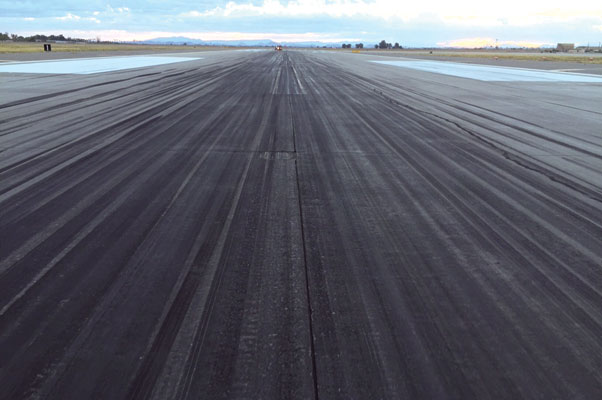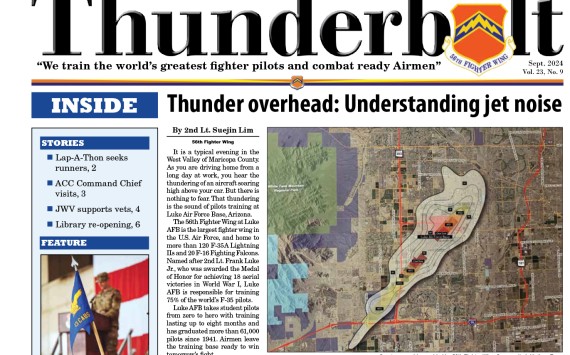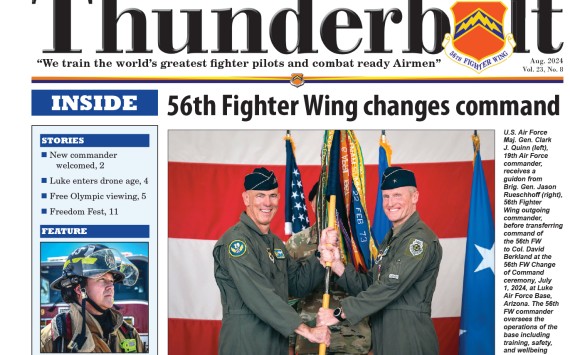LUKE AIR FORCE BASE, Ariz. — During a recent inspection of the flightline, the 56th Operations Support Squadron identified buildup of rubber deposits and completed a project to remove them, a step that keeps sorties in the air and aircraft landing safely.
“When an aircraft touches down, it leaves traces of rubber on the surface,” said Staff Sgt. Charles Giertz, 56th OSS airfield management operations supervisor. “When an excess amount builds up, the aircraft braking action is reduced, and this creates a hazard for landing aircraft, especially during the monsoon season.”
To remove this hazard, visual inspections of the runway are performed daily to determine the need for rubber removal.
“It’s very easy to tell when it starts to become a problem, because the rubber deposits begin to obscure the runway center line and designation markings,” said Master Sgt. Linda Sawyer, 56th OSS airfield manager.
Luke pilots experience the effects of the rubber build up at high speeds.
“It’s comparable to a car sliding all over the place in the rain,” said Maj. Brian Healy, 62nd Fighter Squadron F-35 Lightning II pilot. “Too much buildup could cause us to lose some traction while landing at 160 miles-per-hour. If the rubber buildup isn’t properly monitored and maintained, the approach end of the runway would eventually become unusable.”
To maintain a clean runway free of deposits, rubber deposit removal is conducted on a consistent basis.
“We usually perform the process twice a year, but the process can vary based on the flying tempo of the base and the aircraft we support,” Sawyer said. “It’s a serious issue, and we work with civil engineers to make sure it gets done consistently and within our six-month cycle.”
To remove the rubber deposits at Luke, contractors use a chemical treatment. The next time, Sawyer says he plans to use a high-pressure water treatment.
“Alternating the methods allows us to prolong the life of the runway and keep the chemical buildup to a minimum,” he said.
Both runways at Luke were last completed in May.












